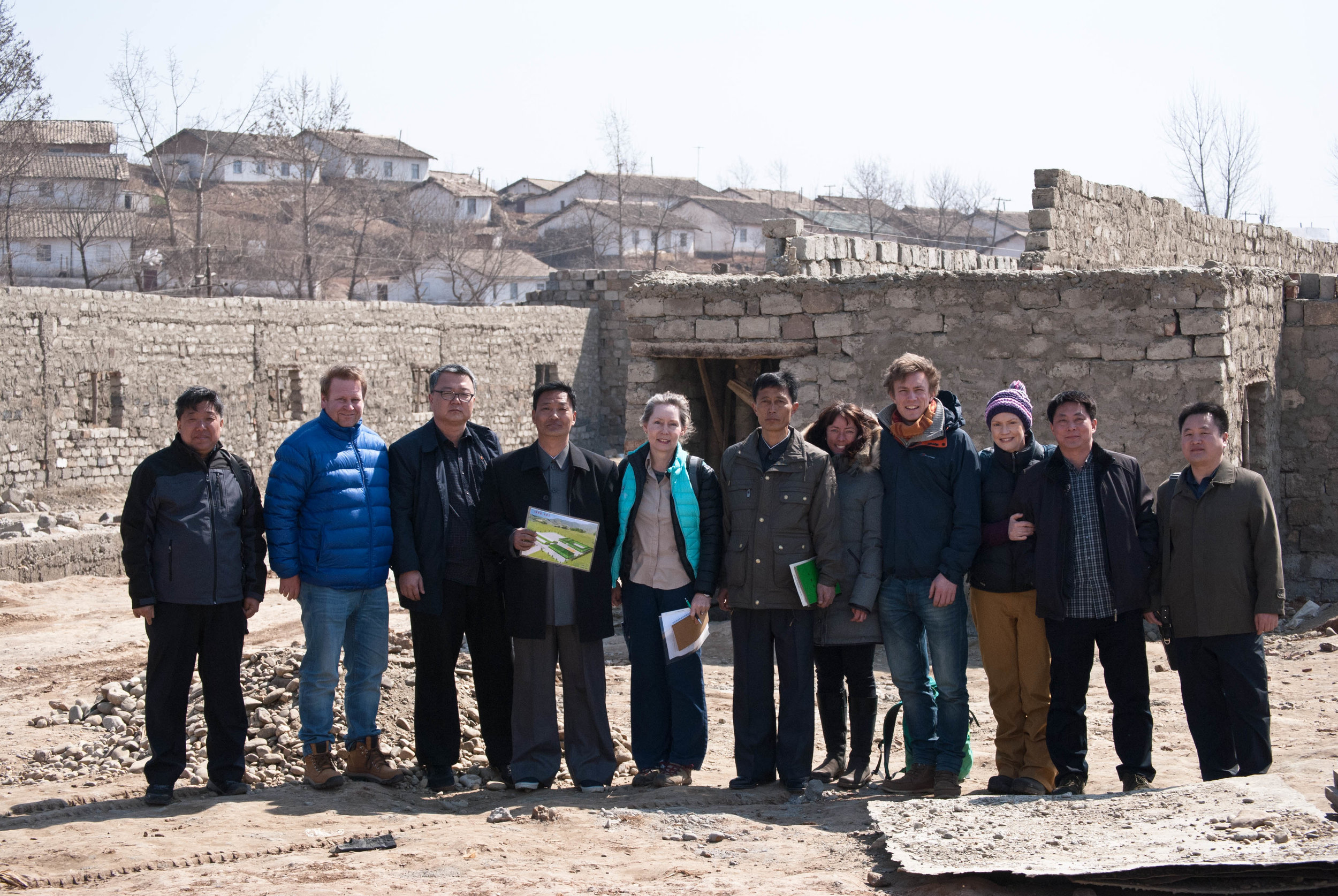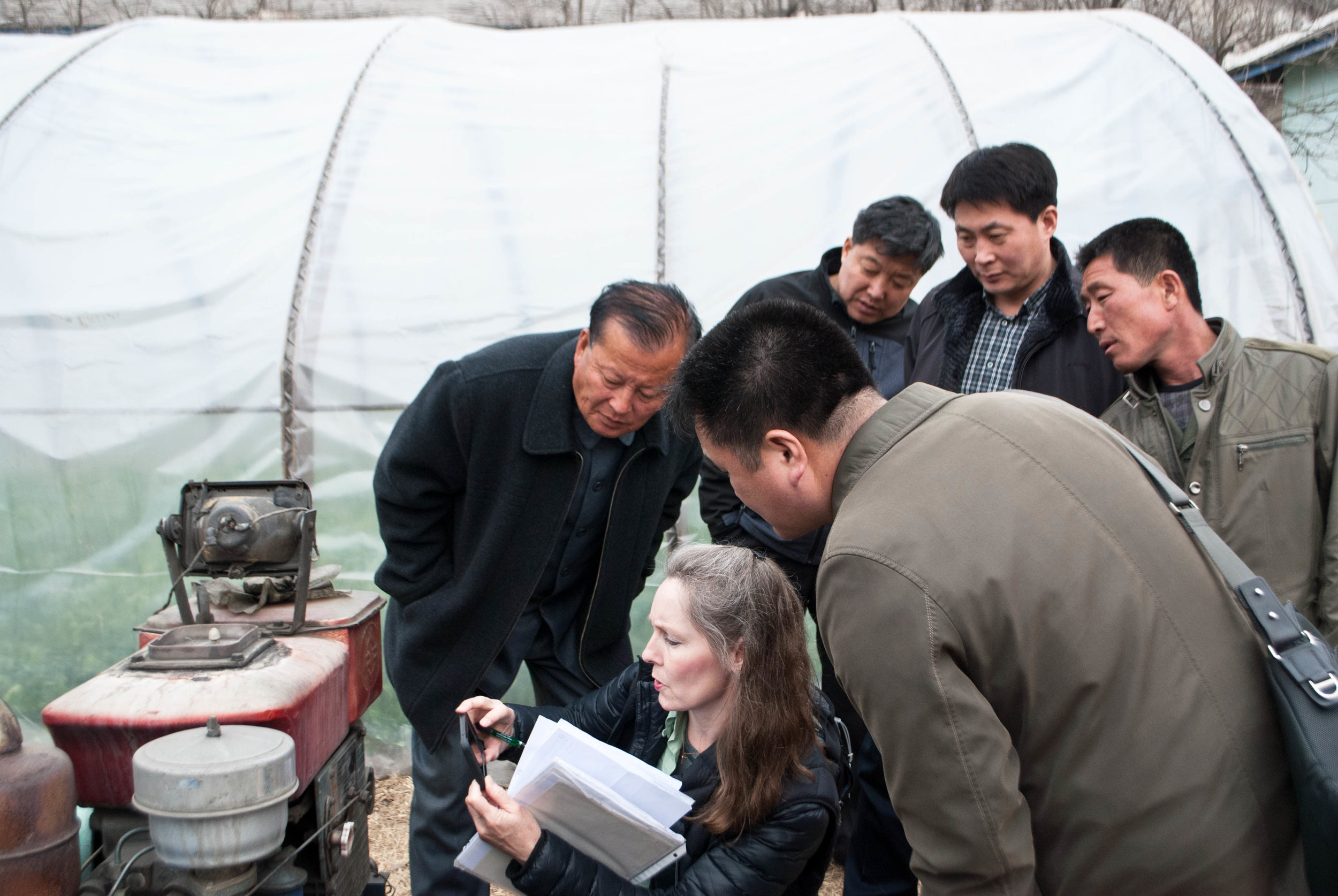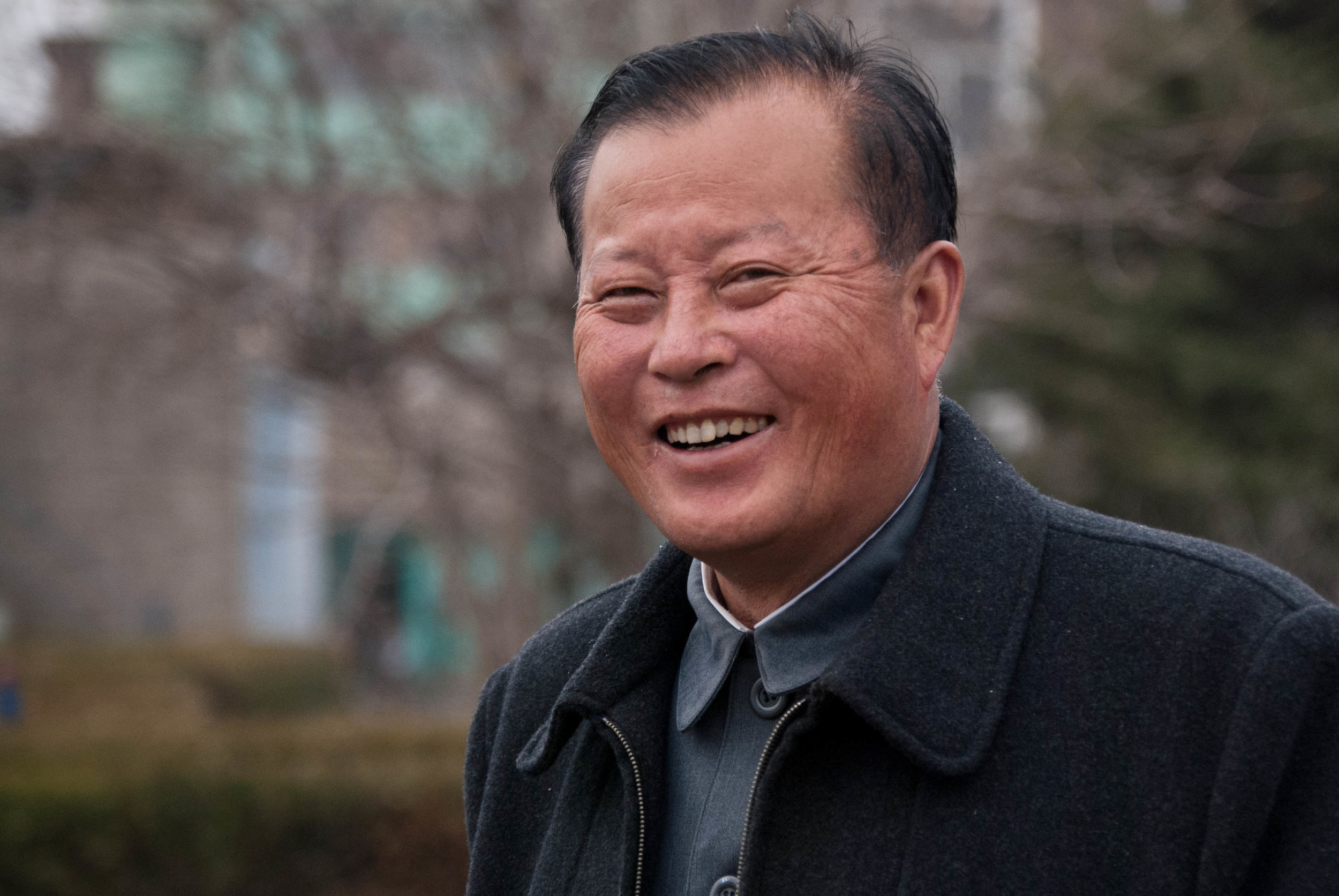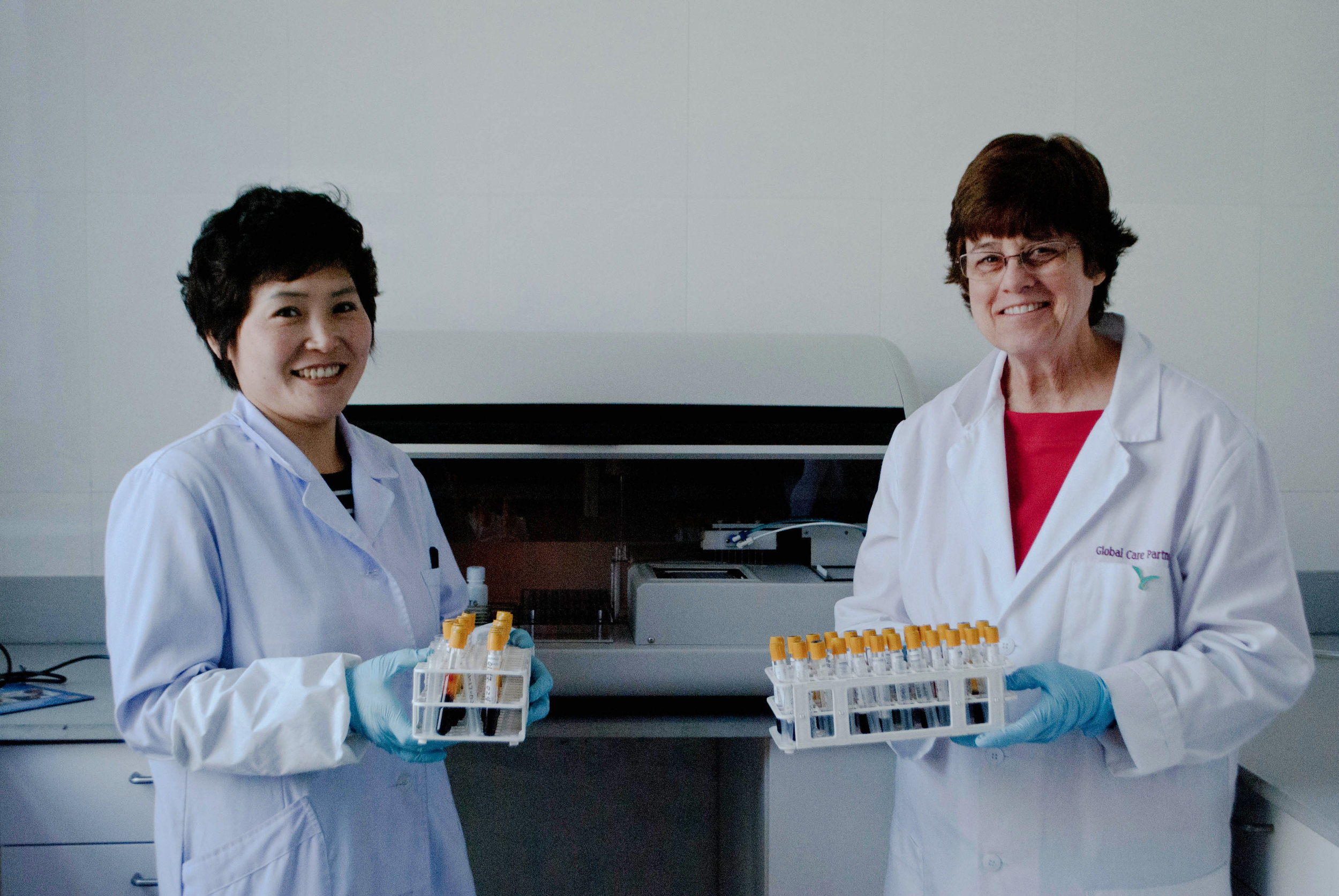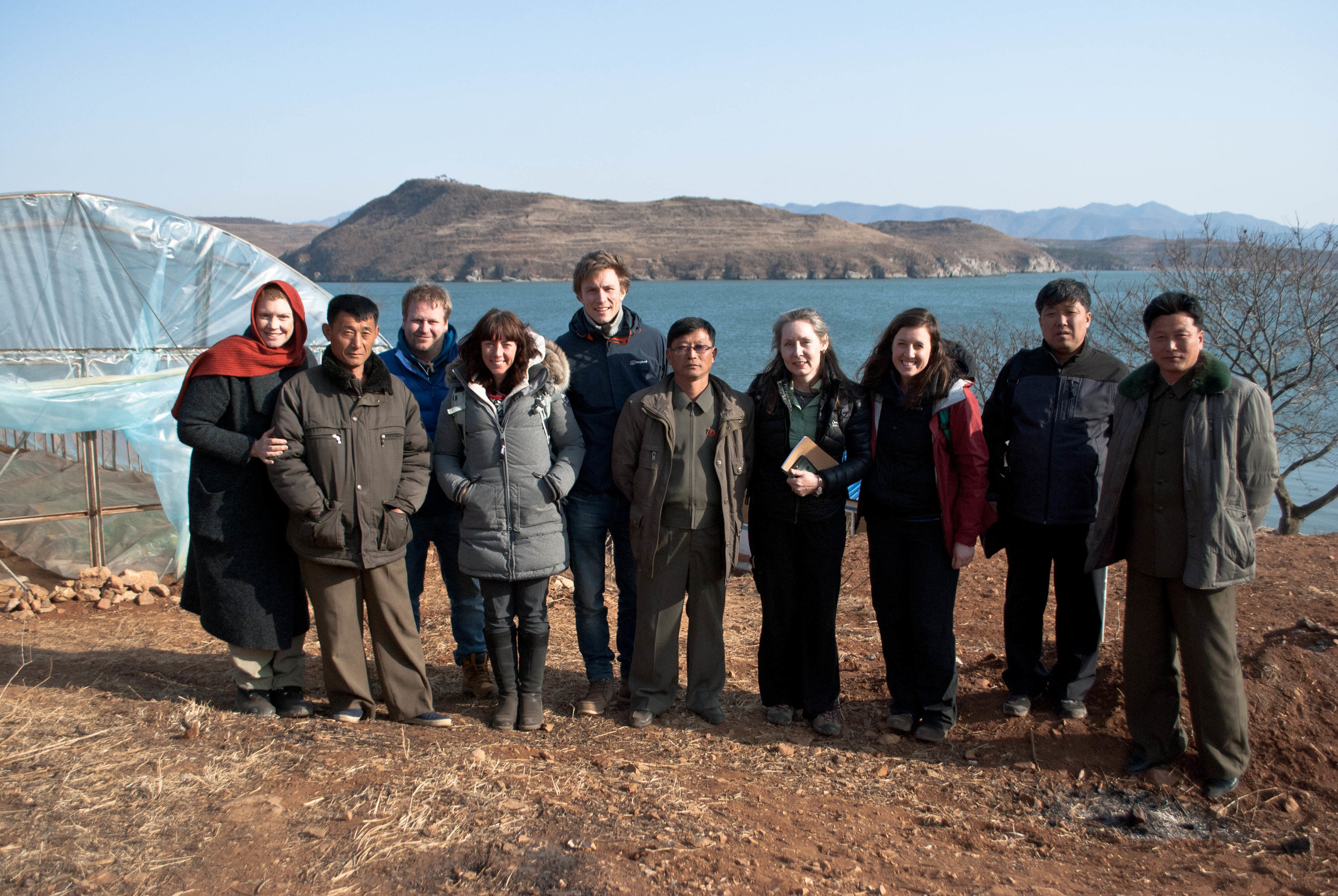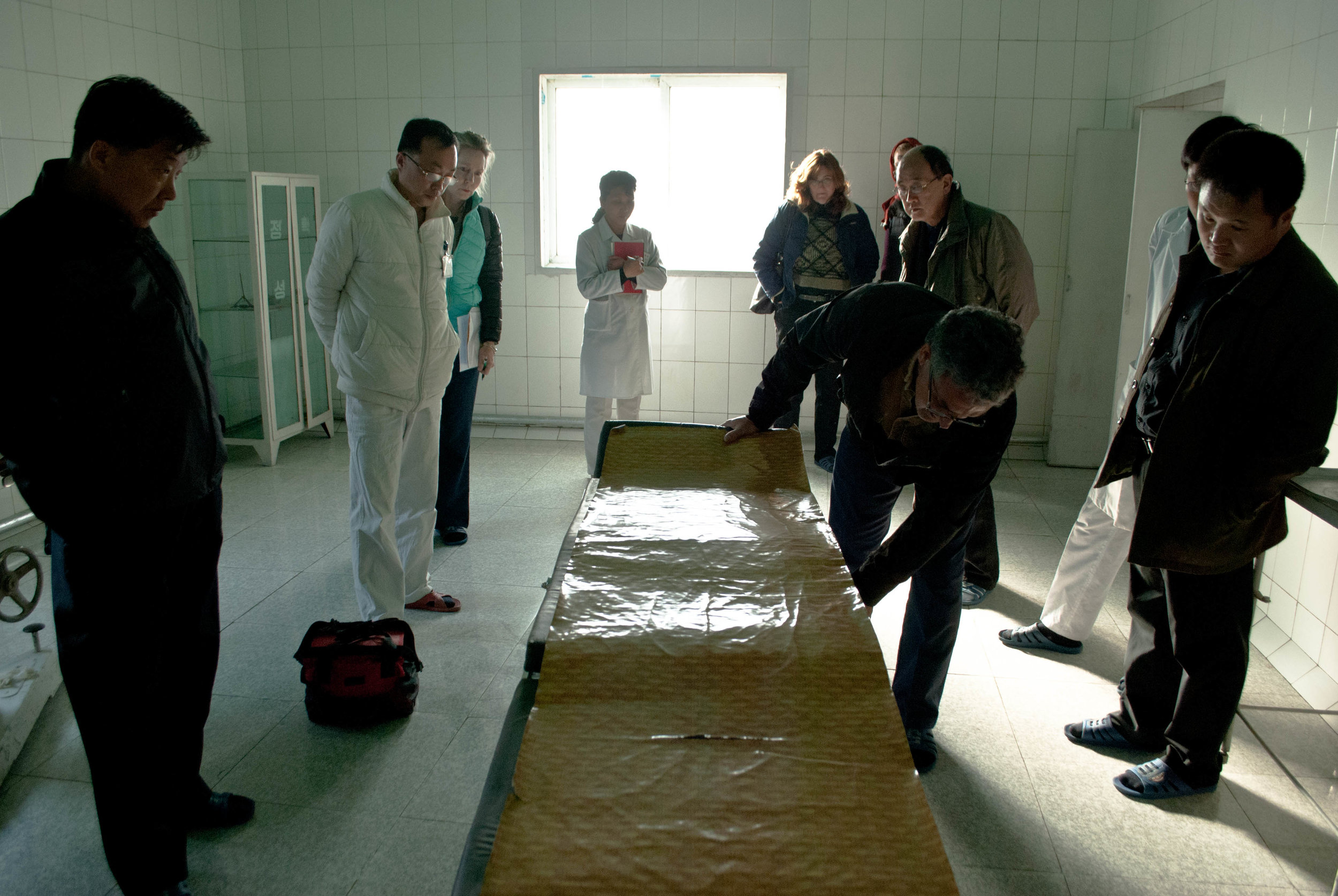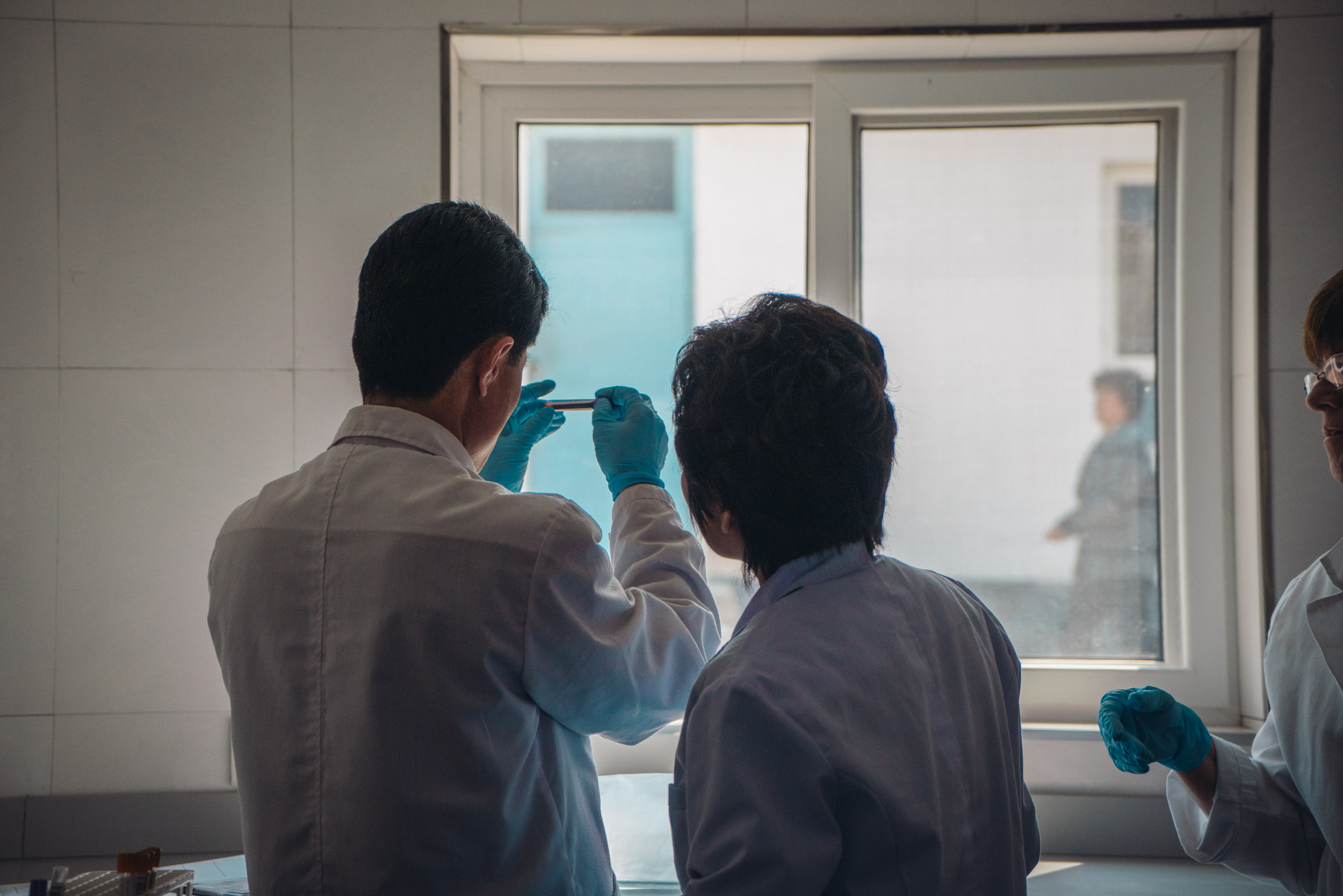A CFK team including 16 people from the United States, Norway, and Australia visited the DPRK from March 18–April 8. The agenda included visits to Kaesong Provincial Pediatric Hospital, 14 TB hospitals and rest homes, and four hepatitis care centers to check on the arrival and distribution of recently arrived shipments and assessment visits to two new potential places.
Counting the Days by Dr. Alice Lee
"Word spread that we are doing something quite remarkable. People clung to this and came from distant places. Some traveled over half a day to attend our clinics, negotiating transport and time off work," Dr. Alice Lee, Co-founder of Hepatitis B Free (Australia) and Director of CFK's Hepatitis B Project, writes about her recent trip to the DPRK.
This marks the third visit for the hepatitis B treatment program, HOPE. Read Alice's story in our April 2017 newsletter or here.
Vegetable Seeds to North Korea by Ketil Fuglestad
North Korea is a closed country, but the authorities invite foreign help to increase the production of vegetables. In 2016, Evangelisk Orientmisjon (EOM) imported 28,000 bags of seeds.
Ketil Fuglestad, an adviser on greenhouse vegetables, afforestation and fruit cultivation, and farmer in Rogaland, Norway shares his experience:
We are at the airport in Beijing, on our way to the office of Air Koryo, the national airline of North Korea. Today, there is only one departure for Pyongyang, the capital of North Korea, and we have to get on that flight. We stop by the office of Air Koryo to check if they have found our luggage, as we checked it in for the final destination. Yes, the suitcases are there. Everything is okay. We only have to wait for the departure.
Vegetable seeds in the luggage
We have one thousand bags of rutabaga seeds with us. Each bag contains 10 grams and has a picture of rutabaga and information about cultivation printed on the outside in Korean. We are concerned about problems in customs because of the large quantity (12 kilos of seed), but the authority chosen translators wave us through. We can grab our suitcases and leave.
For tuberculosis patients
For the hospitals south of the capital Pyongyang, in the provinces of North Hwanghae and South Hwanghae, we brought bags of 100 grams containing seeds. The type of seed is Vige, bred in Italy, and we believe it is well with the climate in North Korea. North Korea’s climate is quite similar to Italy and Spain. In addition, the hospitals get bags of seeds for both greenhouses and outdoor planting. Tomatoes and cucumbers are popular vegetables, as well as spinach, radishes, Chinese cabbage, red onions, chili peppers, and carrots. All tuberculosis institutions have received greenhouses and possess land for outdoor planting.
Asks for greenhouses
The authorities in North Korea want organizations working in the country to support greenhouses, to be able to increase the production of vegetables both summer and winter. In low temperatures, a fiber textile often covers the plants. Wintertime is perfect to grow spinach. In early spring, the greenhouses raise small plants. When the temperature is high enough, plants are replanted outdoors. The greenhouses are used for other plants, also. Evangelisk Orientmisjon (EOM) has given many greenhouses to hospitals, large cooperative farms, and orphanages.
Visit to the hospital
When we visit a hospital, the director summons some of the personnel, the hospital gardener is at the meeting, and the director himself has studied medicine. First, we get a view of the situation: how many patients they have and the current situation regarding food and medicine supply. The director continues with the biggest challenges, after a request for clean potable water and plenty of water. Then, we talk about the growing of vegetables. Everywhere we go, they are very grateful for the greenhouses, and they say that it increases the well-being of the patients, as they get more varied and nutritious food. When Øyvind Dovland from EOM recently visited, he met a hospital director eating rutabaga, and he was very impressed by the taste and the amount of nutrition in it.
The hospital gardener in Sepho
Sin Nyong Ho is a hospital gardener in Sepho (Kangwon province), the fifth largest city in the country and many miles into the mountains from Wonsan. He is particularly good at making compost, the only fertilizer available for his greenhouse. Sin Nyong Ho mixes waste from rice and corn with dung, and this makes good compost. In the tomato greenhouse, the layer of compost is 30-40 cm deep. The tomato plants are robust, but Sin Nyong Ho is unaware of good pollination and its influence. I cut one small and one large tomato in half and show him the difference in the number of seeds. He understands that he has to ventilate well in the morning and hit the rope supporting the vines for the plants to shake, in order to get large tomatoes. There are no bumblebees to help here. We have not met any national advisors in North Korea visiting the plant nurseries and giving advice on growing vegetables in greenhouses. From the greenhouse, we go outside to look at his Chinese cabbage.
The worst flood in living memory
North Korea experienced serious drought when we visited in June 2015. Large rivers were almost dry, only small streams were still running in the bottom of the rivers. The farmers at the cooperative farms carried yokes with two buckets on their shoulders to water a few square meters of growing beans. In October 2016, EOM visited the North Hamgyong province, the northern part of the country, to see the flood damage after being invited. Thirty-thousand houses were ruined, and 80,000 people were homeless. Some people had tents, but the last night of the visit 50cm of snow fell – it is cold to live in a tent. The snow makes the relief efforts difficult.
South of the capital Pyongyang, the situation is better. Svein Løvdal with EOM was there in November, and he witnessed large stocks of corn giving him the impression that the crops had been good before the flooding.
Seeds for 2016 and 2017
Many people participate in bringing seeds to North Korea. EOM sent 277kg in 2016 – 27,700 bags each containing 10 grams. In addition, the vegtable company, NORGRO, has received 97 kilos of vegetable seeds from an Italian company and will send this to North Korea in spring 2017.
Contact EOM if you have any questions. You will find more information on the homepage: (Norwegian website) www.eom.no
Bildetekstar:
- Øyvind Dovland handing out rutabaga seeds to patients in a Tuberculosis hospital in North Korea. The hospital director has given them permission to send seeds to their families.
- Gardener Sin Nyong Ho at the hospital in Sepho is happy for the seeds he has received from EOM (left). He is proudly showing Ketil Fuglestad his field of Chinese cabbage (below). The field has only been fertilized using compost. In the greenhouse, the gardener grows cucumber and tomato, and he trades these for other vegetables for the hospital kitchen.
- Good pollination in the tomato section is vital to get a good crop. The young female gardener pays close attention to learn about good pollination when Ketil Fuglestad teaches.
- In the cooperative farms, the families grow their own vegetables around the houses, especially Chinese cabbage plants, only fertilized with compost but grow well. On the roof of the house, there are pumpkin plants; the roof gives additional heat to the plants.
Ketil Fuglestad on a confirming visit with CFK in spring 2015 at South Hwanghae #3 TB Rest Home



